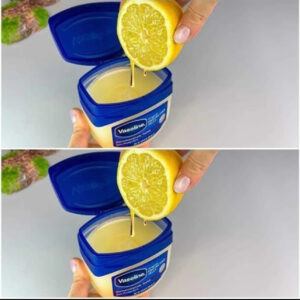We spend a lot of time testing products, tips and tricks to find the easiest, quickest and most effective ways to keep everything inside and outside your home clean. We have tips for cleaning your windows, a step-by-step guide to keep walls looking freshly painted and more. Before you try any of the cleaning methods below, it’s a good idea to check your blind manufacturer’s website for instructions and precautions. Then, follow the simple steps below depending on the material of your blinds and just how deep of a cleaning they need.
How to Clean Blinds Without Taking Them Down
The best way to deep clean your blinds is by taking them down and laying them on a flat surface. It makes it easier to clean both sides and the top and bottom rails thoroughly, but you may not always have the time or energy for this. There are two ways you can remove dust from blinds while they are still hanging: dusting with a microfiber tool like a cloth, glove or duster and vacuuming with a soft, dusting brush attachment. Vacuuming is also the only way we recommend cleaning real wood and fabric blinds or cellular shades.
What You’ll Need
Microfiber cloths, duster or dusting gloves
Vacuum cleaner with attachments
Warm water
Dishwashing liquid
Cleaning Your Blinds with a Microfiber Cloth, Glove or Duster
Open the blind and wrap the microfiber cloth tightly around both sides of a slat or grab both sides with your glove.
For horizontal blinds (sometimes called venetian blinds), start at the top-most slat and work your way down. Starting from top to bottom ensures that you won’t have to clean the same slat a second time when dust from a slat above settles on one below. Wipe the slat from left to right. If you are using a double-sided duster, like this GH Seal star double-sided duster from Swiffer, you’ll clean the topside of one slat and bottom side of the one above it as you pass the duster in between.
For vertical blinds, wrap your microfiber cloth tightly around both sides of the blind and wipe from top to bottom. No need to worry about depositing dust on other slats here, but working from the left-most slat to the right (or vice versa) will allow you to more easily keep track of the slats you’ve already cleaned.
Dip a microfiber cloth in a mixture of dish soap and water. To remove stubborn stains and sticky residue from metal, vinyl or faux wood blinds while they are hanging, dip a microfiber cloth in a bowl of warm water mixed with a few drops of dishwashing liquid.Wipe slats with the damp microfiber cloth. Squeeze out the excess water and wipe the blinds from left to right (or top to bottom if they’re vertical blinds).Wipe slats dry with a clean microfiber cloth. Make sure to wipe both sides of each slat to buff away any water spots or streaks. Use water sparingly, if at all, on real wood blinds.
Expert Tip: Be sure to shake your microfiber tool outside as you start to notice it collecting dust to avoid depositing dust back on to your blinds as you clean.
Cleaning Your Blinds with a Vacuum
Turn down your vacuum’s suction to the lowest setting. Attach your vacuum’s soft dusting brush attachment and turn the suction down to the lowest setting available. If your vacuum only has one suction mode, make sure it isn’t strong enough to damage your blinds. You want the vacuum to pick up dust, not vacuum seal itself to the blinds’ slats.
Close the blind, hold the slats taut and vacuum slowly. Keep the blinds taut and move across horizontal blinds slowly from left to right. If you have vertical blinds, grab each slat and vacuum a small section working your way from top to bottom.
Go over each blind again. Vacuum along each slat again in the opposite direction to pick up any dust that might have been left behind on the first pass.
Open and close the slats in the opposite direction. When you finish, reverse the slats, closing them the other way and vacuum each slat again.
How to Clean Blinds in a Tub
If you want to give metal, vinyl or faux wood blinds a deeper clean, your best bet is in the bathtub. It’s important to note that if you are using this method to clean your blinds, you should pay special attention to the manufacturer’s care instructions. Submerging blinds for extended periods of time in water can cause metal to rust. We don’t recommend this method for cellular shades or real wood blinds as these materials become damaged when immersed in water. If cellular shades become stained, reach out to your manufacturer with questions on how best to remove them or about the warranty offered on your product.What You’ll Need
Towels
Warm water
Dishwashing liquid
Microfiber cloth
Line the tub with towels and fill it with warm water and dish soap. The towels will keep the blinds from scratching the tub. Use warm water and just a squeeze or two of dish soap. Swish to make sure the detergent is dissolved.
Extend the blind and open the slats before submerging the blind into the tub. Keep the top rail draped over the side of the tub and only place one blind into the water at a time.
Soak for up to 20 minutes. Use a cloth to remove any stuck-on stains or dirt.
Rinse the blinds. Drain the tub and use clean water to rinse the soapy water from the blinds. A handheld shower sprayer, if you have one, makes rinsing easier.
Allow blinds to dry completely before replacing. Dry them with a clean microfiber cloth to remove as much water as you can and lay the blinds out flat to dry.
Blind Cleaning Dos & Don’ts
Do your blind cleaning before you sweep or vacuum your floor. You’ll have to re-do your floor cleaning after if you don’t!
Do rehang your blinds only after they are completely dry.
Don’t use water on your blinds without first clearing dust from them with a dry microfiber cloth. For wood blinds and cellular shades, don’t use water at all.
Do check your blind manufacturer’s instructions before cleaning any blinds with water.
Can You Clean Blinds with Dryer Sheets?
You can, but it isn’t ideal. First, you’ll only want to use dryer sheets that have already been through a dryer cycle. When you wipe your blind’s slats with a new dryer sheet, the static attraction will pick up some of the dust, but you’ll be depositing the fabric softener that is built into the sheet onto the slats too. If you want to use old, used dryer sheets to clean your blinds you can, but it won’t do as good of a job as a microfiber cloth or vacuum.
When Do You Have to Replace Your Blinds?
Window blinds and shades are a usually long-lasting investment for a home. Most do not need to be replaced for up to 10 years.
There are a few signs you can look out for when deciding if it is time to replace your blinds:
The blind slats are bent out of shape, broken or warped from humidity or heat damage. If it’s only a few slats, some blind manufacturers will fix just the damaged slats.
The opening and closing of your shades has become a near impossible task. With time and regular use, it’s expected that the cords on your blinds will start to loosen, making it difficult to let light in during the day or close your shades at night.
The blinds and blind cords are discolored, yellowing or are fraying. With time, our home products’ quality will start to decline — especially products that are in near constant direct sunlight like blinds are!
Your blinds are out of style or ill-fitting on new windows. Windows are not made in one universal size. Different windows will require different shades that fit the size of the new window, plus some styles just don’t look right on all windows.




